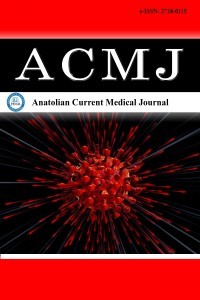1.
World Health Organization. Coronavirus disease 2019 (COVID-19): situation report, 51. World Health Organization. (https://iris.who.int/handle/10665/331475), 2020.
2.
Zhou F, Takata Y, Du R, et al. Clinical course and risk factors for mortality of adult inpatients with covid-19 in Wuhan, China: a retrospective cohort study. The Lancet. 2020;395(10229):1054-1062.
3.
Zhu N, Zhang D, Wang W, et al. China novel coronavirus investigating and research team. A novel coronavirus from patients with pneumonia in China, 2019. N Engl J Med. 2020;382(8):727-733.
4.
Carfì A, Bernabei R, Landi F. Gemelli Against COVID-19 post-acute care study group. Persistent symptoms in patients after acute COVID-19. JAMA. 2020;324(6):603-605.
5.
Auwaerter PG. The race to understand post-COVID-19 conditions. Ann Intern Med. 2021;174(10):1458-1459.
6.
Dani M, Dirksen A, Taraborrelli P, et al. Autonomic dysfunction in 'long COVID': rationale, physiology and management strategies. Clin Med (Lond). 2021;21(1):e63-e67.
7.
Kutluk A, Tsuji T, Ukawa T, et al. A novel online method to monitor autonomic nervous activity based on arterial wall impedance and heart rate variability.Med Biol Eng Comput. 2010;48(4):351-359.
8.
Akselrod S, Gordon D, Ubel FA, Shannon DC, Berger AC, Cohen RJ. Power spectrum analysis of heart rate fluctuation: a quantitative probe of beat-to-beat cardiovascular control.Science. 1981;213(4504):220-222.
9.
Grégoire JM, Gilon C, Carlier S, Bersini H. Autonomic nervous system assessment using heart rate variability.Acta Cardiol. 2023;78(6):648-662.
10.
Nunan D, Sandercock GR, Brodie DA. A quantitative systematic review of normal values for short-term heart rate variability in healthy adults.Pacing Clin Electrophysiol. 2010;33(11):1407-1417.
11.
Wu L, Jiang Z, Li C, Shu M. Prediction of heart rate variability on cardiac sudden death in heart failure patients: a systematic review.Int J Cardiol. 2014;174(3):857-860.
12.
Lee CCE, Ali K, Connell D, et al. COVID-19-associated cardiovascular complications.Diseases. 2021;9(3):47.
13.
Shah B, Kunal S, Bansal A, et al. Heart rate variability as a marker of cardiovascular dysautonomia in post-COVID-19 syndrome using artificial intelligence.Indian Pacing Electrophysiol J. 2022;22(2):70-76.
14.
DosSantos MF, Devalle S, Aran V, et al. Neuromechanisms of SARS-CoV-2: a review.Front Neuroanat. 2020;14:37.
15.
Hawerkamp HC, Dyer AH, Patil ND, et al. Characterisation of the pro-inflammatory cytokine signature in severe COVID-19.Front Immunol. 2023;14:1170012.
16.
Nadwa EH, Al-Kuraishy HM, Al-Gareeb AI, et al. Cholinergic dysfunction in COVID-19: frantic search and hoping for the best.Naunyn Schmiedebergs Arch Pharmacol. 2023;396(3):453-468.
17.
Mancia G, Grassi G. The autonomic nervous system and hypertension.Circ Res. 2014;114(11):1804-1814.
18.
Shah AS, Lampert R, Goldberg J, et al. Alterations in heart rate variability are associated with abnormal myocardial perfusion. Int J Cardiol. 2020;305:99-105.
19.
Faria D, Moll-Bernardes RJ, Testa L, et al. Sympathetic neural overdrive, aortic stiffening, endothelial dysfunction, and impaired exercise capacity in severe COVID-19 survivors: a mid-term study of cardiovascular sequelae.Hypertension. 2023;80(2):470-481.
20.
Asarcikli LD, Hayiroglu Mİ, Osken A, Keskin K, Kolak Z, Aksu T. Heart rate variability and cardiac autonomic functions in post-COVID period.J Interv Card Electrophysiol. 2022;63(3):715-721.
21.
Lampsas S, Oikonomou E, Souvaliotis N, et al. Impaired heart rate variability one and six months post acute COVID-19.Eur Heart J. 2022;43(Suppl 2):ehac544.402.

